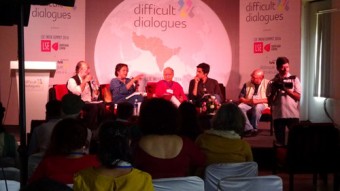The twilight and the end of life
Editor over phone: “How do people die in Goa?”
I (not well-travelled, treat so not sure whether people die differently elsewhere) think: “We stop breathing.”
But I say, no rx knowing he needs an article from me: “I’ll write about it.” A study by Goa University and government statistics indicate that somewhere between 25 and 30 people die every day in Goa, and there’s a lot to say on the topic.
But before I write about dying, let me first explore what precedes it. Those of us who don’t die young must live to old age. Creaky bones, incontinence, malfunctioning brains, onset of deafness/blindness and lack of mobility have to be dealt with: as much by the care-givers as by the old. Much though we love to tom-tom our traditions of caring for our parents, lack of time, space, resources (another word for money) and (wo)man-power have given rise to the need for old-age ‘homes’.
It’s true that most of Goa’s old people, as in the rest of the country, live with their families at home. Does that mean everything’s rosy? Of course not. There are frictions, failings and frustrations of all kinds – and those elderly folks who have smooth, happy and healthy lives are not necessarily in the majority.
Goa is schizophrenic. On one hand we have the with-it youngsters hip-hopping all over the beach belt, and on the other we have retirees flocking in from distant lands for peace and quiet through the dinner-and-dessert time of their lives.
Homes for the aged have sprouted in several villages. The village of Guirim has ‘Reach Out’, which takes in even bed-ridden seniors and provides 24-hour medical and nursing care.
Down South in Ponda is SnehaMandir, an approximately 30-year-old complex of twelve cottages, run by the Goa Hindu Association Trust. It is a secular NGO supported monetarily by 2,500 members, donors and ‘well-wishers’. A central block has a dining room, kitchen and two television rooms – one for men and one for women because generally men and women like to watch different things – in addition to a library and a lecture room. The central block encourages interaction and camaraderie amongst residents to make them feel part of an extended family. 12 trained nurses and 12 helpers work in shifts to give 24-hour care. There is a Geriatric Centre for bedridden patients with a physiotherapy and surgical centre (open also to non-residents in the area), a yoga instructor, a mobile clinic and ambulance service (serving 8 villages in the area) as well as a Home Nursing School (funded by the Goa Government) which provides free education to 20 nursing students a year, on the proviso that their practical training is done at the Complex. The inmates (is residents a better word?) interact with the outside community. They ‘adopt’ high school students and provide them with books, uniforms, fees. They sometimes tutor and guide them as well, in their studies. If any of the students show potential for further study, that further expenditure is met by the Trust. In turn students spend a lot of time with the ajee-ajobas.
Despite popular perception, not everyone in an old-age home has been abandoned. Quite often they need to be in homes because their children are working or living abroad, or because they themselves are unmarried or childless.
Posh retirement colonies are coming up in Siridao and Nachinola. One bills itself as ‘independent and assisted living quarters for 60 plus individuals’. Builders are “providing retirement homes like those offered in the UK, US and Japan, but to suit the Goan budget”. These up-market ‘homes’ are fully air-conditioned, have 24-hour security and power back-up, medical services, senior-friendly modular kitchens and wheelchair accessibility.
At the other end of the spectrum, at Lar Santa Margarida in Divar, is a Home for the Aged run by the Poor Sisters of Our Lady. It’s the ancestral home of the late Custodio Manuel Gomes Pereira. His wife, Lillian, donated it to the Poor Sisters of Our Lady in 1986 to provide solace to those who had nobody to look after their needs.
When the twilight of life becomes the end of life, funeral arrangements in Goa, like the rest of the country, are the purview of the various religious communities. The main provisions here are for Hindu cremation and Muslim and Christian burials. Goa does host other faiths, such as Parsis and Jews, but there are no provisions for their death rituals in the state.
Until a few decades ago (even now in some areas), Hindu landowners cremated family members in their fields. The others took the bodies to the cremation grounds located on the outskirts of their village. The cremation ground at Mapusa is big enough to have a jogging track inside it. The only electric crematorium in Goa is in Ponda and does not appear to be functional (the office that runs it is not reachable by phone).
Overall, we continue to burn the trees to burn the dead. Just wondering: how come some entrepreneur hasn’t yet developed a plantation of burnable wood? After all, everyone must die, and we are an overpopulated nation. Commerce could overtake spookiness. (As an aside: The Sangolda crematorium is surrounded by homes and the one at Saligao has a building facing it which I’m told is unoccupied because no one wants to see the smoking/smouldering dead from their windows.)
The Muslims are having a problem. Their burial ground in South Goa is opposite the garbage dump at Sonsoddo. This was allotted to them by the government after many years of correspondence and requests.




